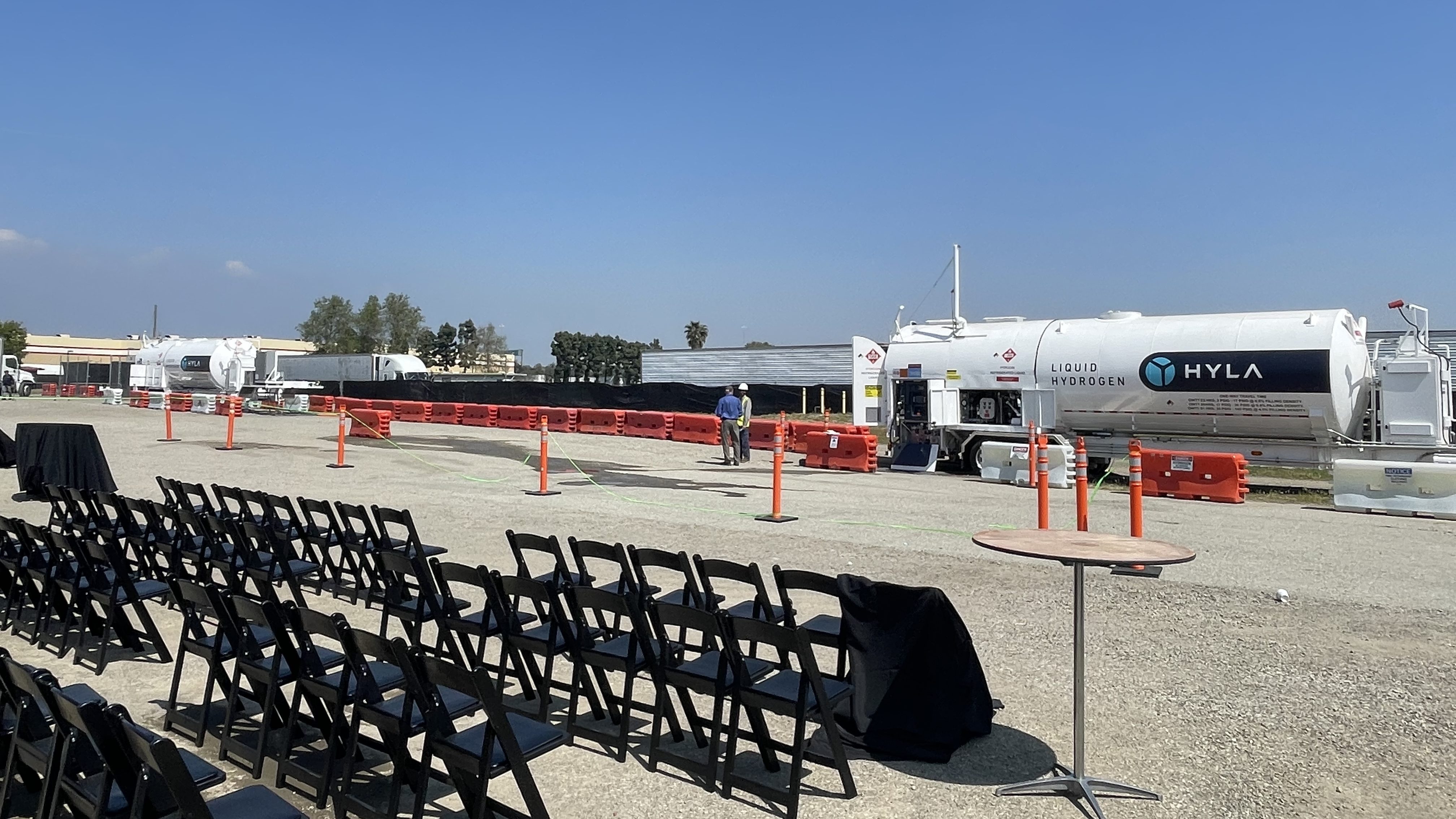
Nikola, a manufacturer of fuel cell and battery electric semi trucks, recently inaugurated its first HYLA refueling station. The aim is to establish a hydrogen refueling network that can be rapidly deployed and expanded as fuel cell trucks become more prevalent.
There is a strong push for zero-emission trucks in California, especially in response to the state’s new truck regulations. This focus is particularly on the trucking routes connecting the Ports of Los Angeles and Long Beach with the distribution centers of the Inland Empire (with Ontario at its core).
For zero-emission trucks, the two primary options are batteries or hydrogen fuel cells.
While Nikola offers both technologies, the challenge with hydrogen lies in the complexity of setting up refueling stations compared to the relative simplicity of adding new chargers to the existing electrical grid.
To address this challenge, Nikola introduced its HYLA concept, which allows for the deployment of temporary refueling stations in targeted areas using streamlined permitting and construction processes. These temporary stations can later be developed into permanent structures.
The current refueling station is a basic setup with asphalt and gravel, accompanied by a support building near the Ontario Airport. Despite its simplistic design, Nikola was able to set up the station in just a few months, which is crucial given the rapid adoption of electric trucks, particularly in the drayage sector.

The station comprises two large liquid hydrogen tanks on trailers, each capable of holding over 800 kilograms of liquid hydrogen, providing enough fuel for approximately 20-25 fillups. The Nikola Tre FCEV has a hydrogen tank capacity of about 70kg, but each fillup may not completely top up the tank.
The refueling process takes around 20 minutes and requires technicians to oversee. Fueling with highly compressed hydrogen (700 bar) is more complex than refilling traditional diesel or high-powered DC chargers. The equipment on the tank trailer includes motors and pumps to convert liquid hydrogen into compressed gaseous form before transferring it to the Tre’s tank.
Due to the pumping process, there is some noise from the onboard pumps, and a certain amount of hydrogen is lost during transfer due to the molecule’s small size.
Nikola currently refills the tanks once a day or every two days but aims to ramp up to refilling 50-70 trucks daily, necessitating daily deliveries of liquid hydrogen. Presently, the hydrogen used is classified as “gray” hydrogen, produced from methane, a fossil fuel source. Though FCEVs are more efficient than diesel vehicles when powered by hydrogen from methane, they are not as efficient as battery EVs charged with electricity from methane-generated sources.
Looking ahead, Nikola envisions green energy hydrogen electrolysis plants to produce its own liquid hydrogen, facilitating zero-emission operations from production to refueling. While the dream of green hydrogen is still in the future, Nikola plans to transition the temporary station into a permanent setup, paving the lot and installing permanent pumps. The trailers can then move to the next site, acting as an advance team to expedite the setup process before full construction commences.
